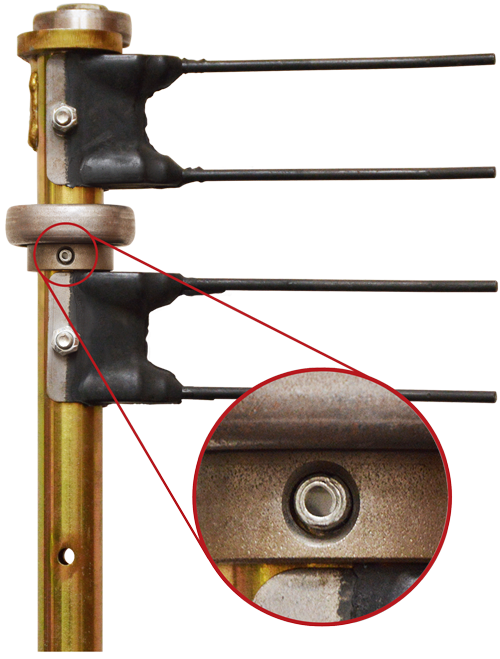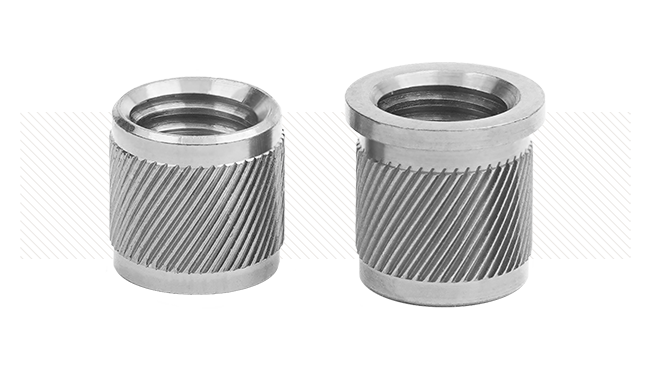Hay Rake Assembly
PRIOR SOLUTION:
A manufacturer of agricultural attachments was experiencing fatigue failures with their use of a Slotted Spring Pin in a hay rake assembly. The pin was used to retain the hub to the shaft.
The agricultural manufacturer contacted SPIROL because they had read that Coiled Pins had better service life, especially in dynamic applications. They declined SPIROL’s complimentary Application Engineering assistance, and simply requested samples of a heavy duty Coiled Spring Pin of the same size Slotted Spring Pin that was breaking in the hay rake assembly. A few weeks later, they contacted SPIROL again, this time to request Application Engineering assistance.
They explained that the heavy duty Coiled Spring Pin had also failed in the application, therefore they next tried a heat treated Solid Pin – thinking that an even stronger pin was needed for the assembly. The heat treated Solid Pin also failed.
SPIROL SOLUTION:
Upon reviewing the application, SPIROL Engineering quickly learned that the host material in which the pin was used was non-heat treated cold rolled steel. The failed assemblies were evaluated to determine the root cause of the failures, and in each instance, it was found that the hole in which each pin was used had been elongated. All of the pins that failed in the hay rake assembly, the Slotted Spring Pin, heavy duty Coiled Spring Pin and heat treated Solid Pin, were actually too stiff for the soft host material. The result was that when a force was applied onto the pin, none of these pins were flexible enough to absorb the shock and vibration, and each rigid pin simply transmitted the force onto the hole wall that resulted in deformation. Once the hole was elongated, any force on the pin was exacerbated due to the movement of the pin within the widened hole. This was further compounded by the large countersink on the entrance to the hole which introduced additional bending stress on the pin.
To solve the problem, rather than going to a stronger pin, the hay rake manufacturer actually needed a more flexible pin. They needed a pin that was both strong enough to resist the dynamic forces that occurred during use, and also flexible enough to absorb the shock and vibration to isolate the hole from the force versus simply transmitting the forces onto the hole wall. The countersink to the hole also needed to be removed.
It was also discovered that the other Spring Pins were corroding even though they were zinc plated. What the hay rake manufacturer didn’t realize was that zinc plate is primarily recommended for Slotted Pins and Coiled Pins to resist galvanic corrosion – not for atmospheric corrosion protection. This is because for any product that has a hole in it, only the outer diameter gets full coverage of the zinc plate. The inner diameter only gets about one diameter’s worth of plating. Thus, the Spring Pins were rusting from the inside out.
Therefore, in addition to changing to a standard duty Coiled Pin (vs. a heavy duty Slotted or heavy duty Coiled Pin), SPIROL recommended that the hay rake manufacturer change from a zinc plated high carbon steel pin to a plain, 420 stainless steel. The 420 stainless steel provides great corrosion resistance in this application without the need for subsequent coating/plating, and 420 stainless has superb fatigue resistance in dynamic applications.
Complimentary Applications Engineering Support: SPIROL Engineers will review your application needs and work with your design team to recommend the best solution.

SPIROL® standard duty Coiled Spring Pin in a hay rake application
Additional Resources
Why Should You Partner with SPIROL?
Our core purpose is to be a resource that facilitates the reduction of your assembly costs, improves your product quality and enhances your overall competitiveness. In addition, SPIROL offers:



 LOCATIONS
LOCATIONS USA
USA  Canada
Canada  United Kingdom
United Kingdom  Deutschland
Deutschland  México
México  Brasil
Brasil  Česká republika
Česká republika  France
France  España
España  한국
한국